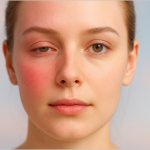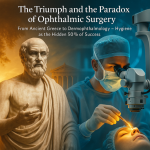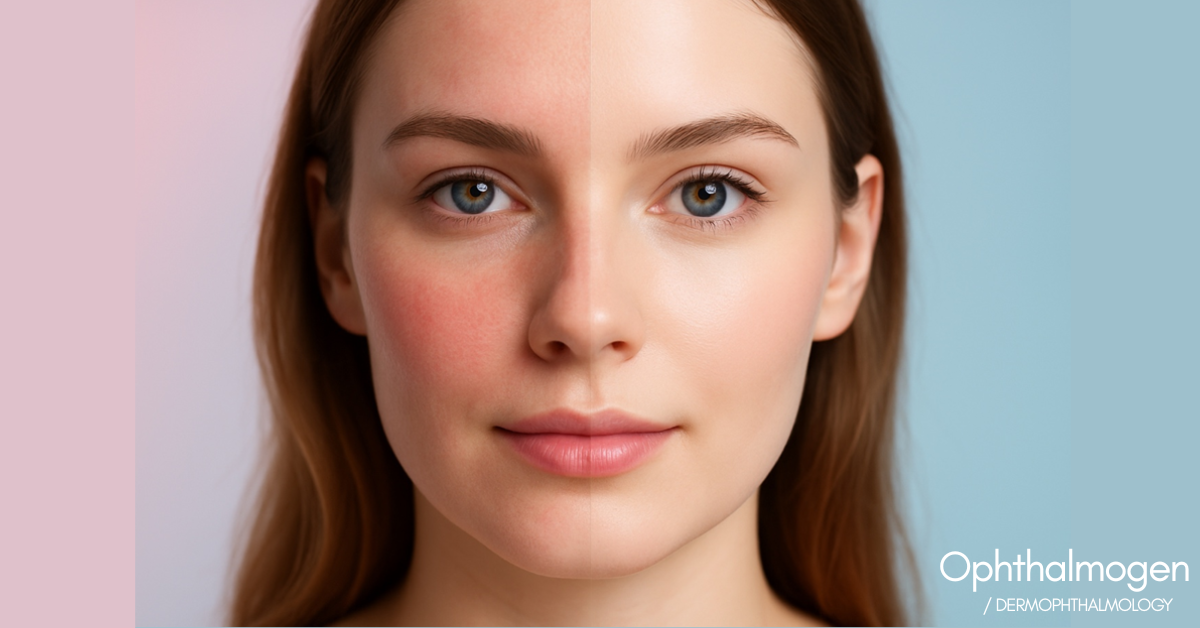
Introduction
Rosacea is a chronic inflammatory condition that affects millions of people worldwide. While best known for its redness, telangiectasia and facial irritation, it often extends beyond the skin – reaching the eyelids and ocular surface, where it may trigger blepharitis and recurrent chalazia.
Modern Dermophthalmology reveals what remained unrecognized for decades:
that ocular rosacea and chalazion are two clinical expressions of the same underlying inflammatory-lipidic dysfunction of the skin–eye interface.
Historical Perspective – From Ancient Descriptions to Modern Science
Rosacea was first described in the 14th century by Geoffrey Chaucer, and later by Thomas Bateman (1812) as “gut rosacea”, a chronic inflammatory disorder characterized by redness and swelling around the nose and eyelids.
In ancient Greek medicine, both Hippocrates and Galen noted that “reddish facial tones” were often accompanied by “small hard inflammations of the eyelids” — a description strikingly similar to what we now call chalazia. At that time, however, the distinction between dermatologic and ocular disease did not exist; both were seen as one systemic imbalance.
In ancient Greek medicine, both Hippocrates and Galen noted that “reddish facial tones” were often accompanied by “small hard inflammations of the eyelids” — a description strikingly similar to what we now call chalazia.
Since then, the rosacea–chalazion connection has become an established field of study in both dermatology and ophthalmology.
Παθοφυσιολογία – Πώς συνδέονται η ροδόχρους και το χαλάζιο
Ocular rosacea is characterized by:
- Chronic inflammation of the eyelid margins and meibomian glands
- Hyper-viscous lipid secretion that blocks the gland ducts
- Immune hyperreactivity with elevated IL-1, IL-6, TNF-α, and MMP-9
- Demodexfolliculorum proliferation causing follicular irritation
These mechanisms lead to meibomian gland obstruction and formation of chalazia
lipid-filled inflammatory cysts that represent the “blocked expression” of rosacea within the eyelid.
What was once seen as a localized infection is now understood as part of a systemic inflammatory and sebaceous imbalance linking the skin and eye.
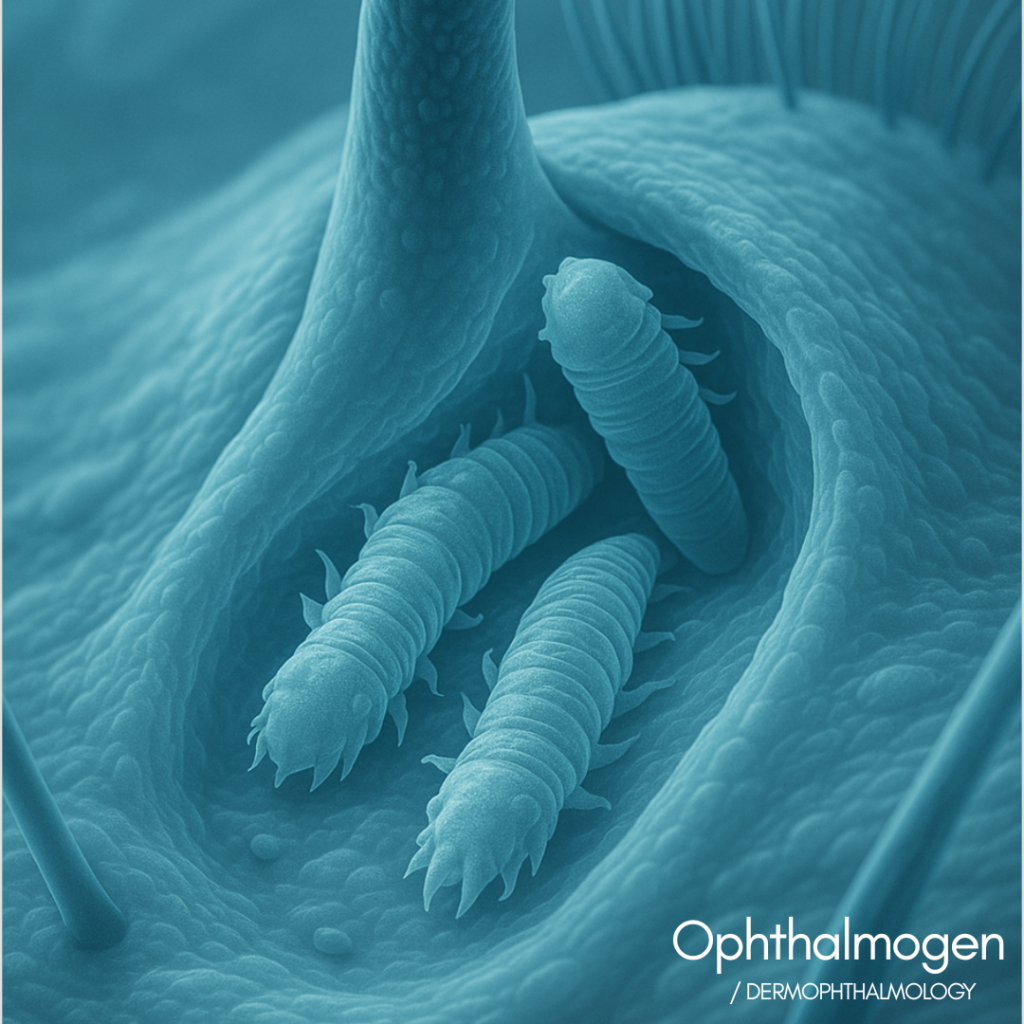
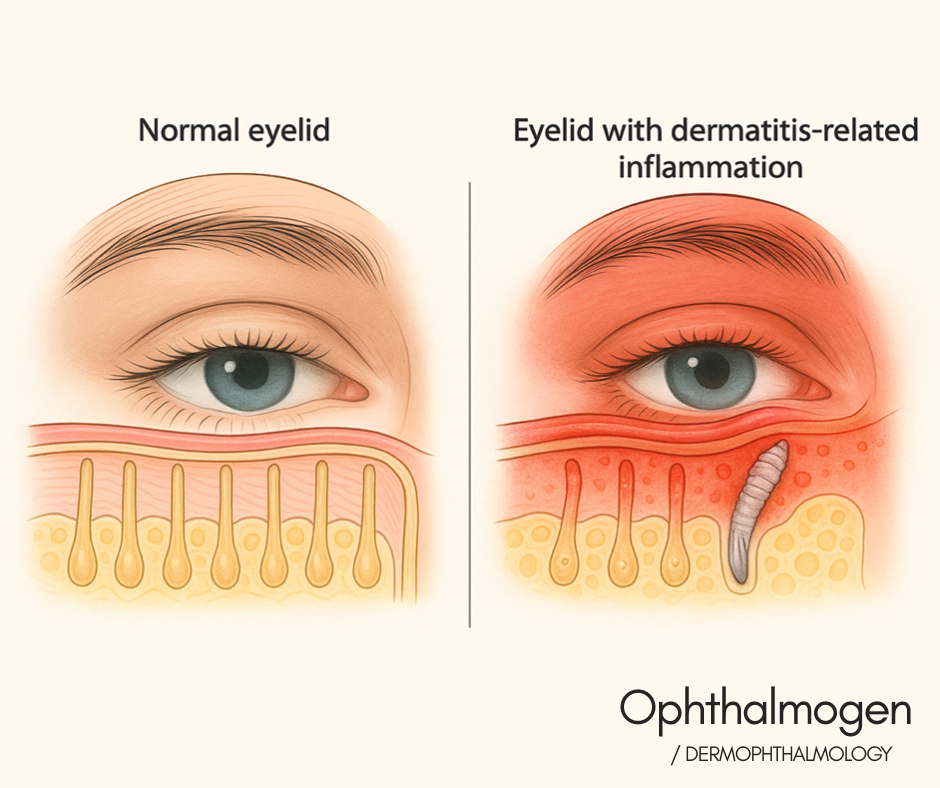
Clinical Cases and Observations
1️⃣ Case 1 – Female, 42 years old, rosacea with recurrent chalazia:
After multiple antibiotic ointments failed, she adopted a daily dermophthalmologic protocol:
EYE10 × 20 min / Gel massage / Spray with Tea Tree Oil.
Within 3 weeks, the eyelid swelling subsided and the glands cleared.
2️⃣ Case 2 – Male, 55 years old, ocular rosacea with dry eye:
Thermal compresses, lid massage and Ophthalmogen Gel were combined with oral doxycycline.
After 1 month, MGD symptoms decreased by 70 % (clinical observation).
3️⃣ Case 3 – 29-year-old make-up artist with sensitive skin and micro-chalazia:
Switched to hypoallergenic cosmetics, added Ophthalmogen Spray and Eye10 compresses → visible improvement within 10 days.
Dermophthalmology: A New Way to Treat the Old Problem
Dermophthalmology integrates dermatologic and ophthalmologic science into one unified approach for eyelid and ocular surface care.
Step | Product | Action |
1️⃣ | Ophthalmogen EYE10 | 40 °C thermal therapy to liquefy and drain meibomian secretions |
2️⃣ | Ophthalmogen Gel | Gentle eyelid massage to boost microcirculation and detoxify tissue |
3️⃣ | Ophthalmogen Spray | Hydration and microbiome balance through Tea Tree Oil |
This routine does not merely relieve chalazion—it stabilizes the entire dermo-ocular ecosystem, reducing inflammation and recurrence.
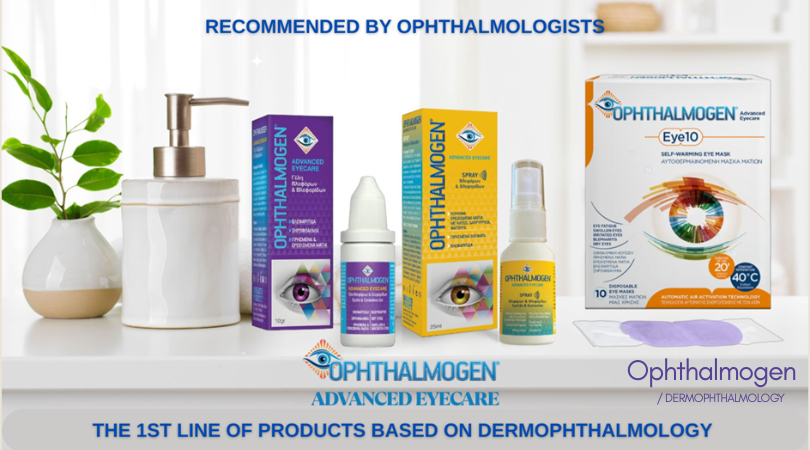
From “Lesion Treatment” to “Preventive Philosophy”
Conventional medicine once viewed chalazion as an isolated lesion to be excised or drained.
The Dermophthalmologic view interprets it as a signal—
a local manifestation of systemic imbalance in the skin–eye barrier.
This paradigm shift echoes the philosophy of Ophthalmogen:
Prevention and daily hygiene are the real forms of therapy.
Conclusion
Rosacea and chalazion share the same roots: inflammation, lipid imbalance, Demodex proliferation, and microbial dysbiosis.
By bridging skin and eye, Dermophthalmology introduces a new medical paradigm—
one that combines scientific rigor with daily self-care.
👁️ The gaze becomes clear, calm, and radiant again.
True beauty begins with equilibrium.
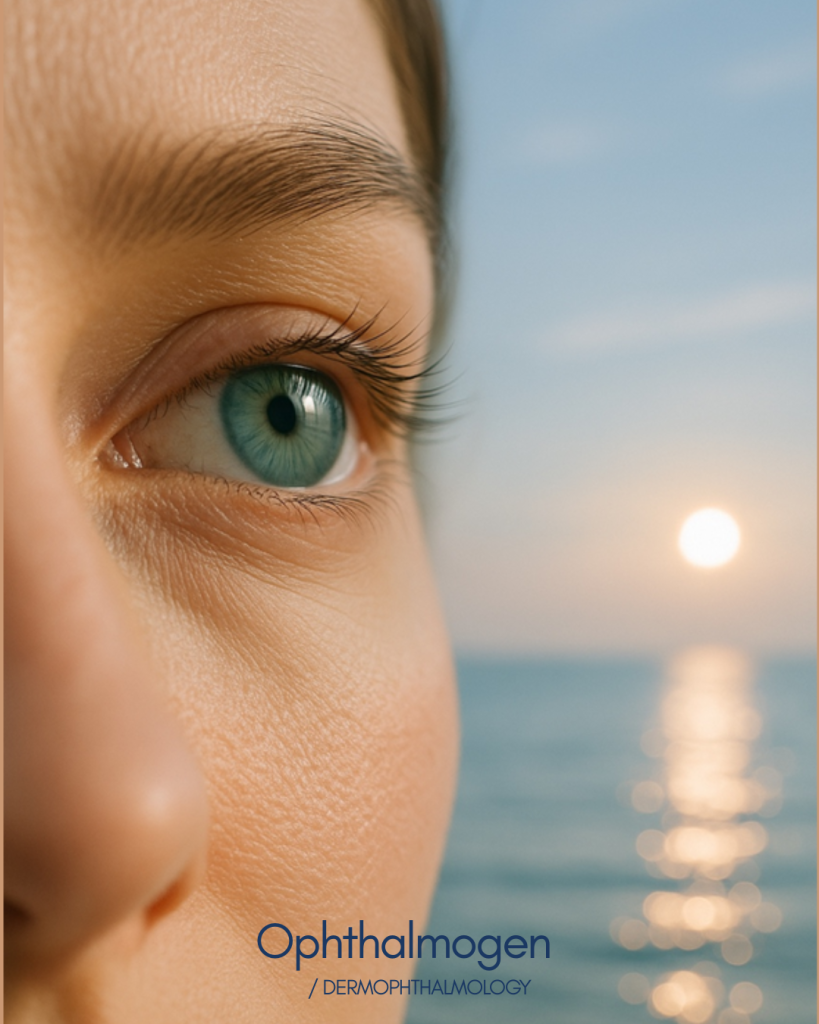
Discover the full Ophthalmogen range at www.ophthalmogen.com and Dermophthalmology at www.Dermophthalmology.com
Give your eyes the care and beauty they deserve.

